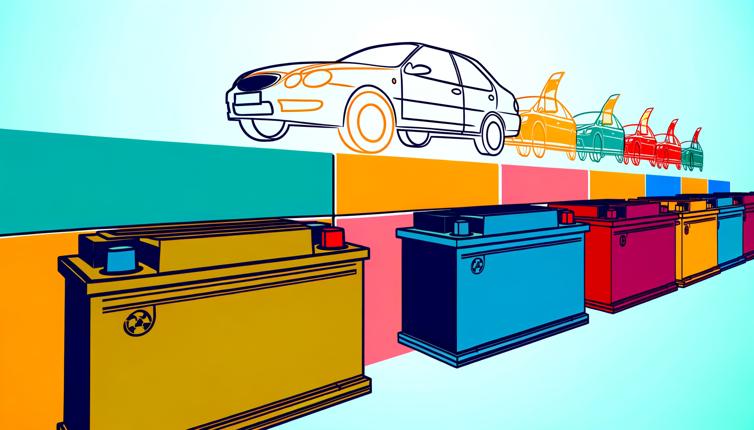Understanding the Basics
Before diving into the details, it is essential to understand the basics of a car battery. A car battery is a rechargeable device that provides electrical energy to the vehicle's electrical system. It powers the starter motor, the lights, and other electrical components. Understanding how a car battery works will help you make an informed decision when buying one.,The two main types of car batteries are lead-acid batteries and lithium-ion batteries. Lead-acid batteries are the most common and affordable option. They consist of lead plates immersed in sulfuric acid, which generates the necessary electrical energy. On the other hand, lithium-ion batteries are more expensive but offer longer lifespan and higher power output.,To determine the right battery for your vehicle, you need to consider factors like the battery's size, cold-cranking amps (CCA), reserve capacity (RC), and maintenance requirements. These specifications vary depending on your vehicle's make, model, and electrical demands. It is essential to consult your vehicle's manual or a professional technician to find the right battery for your specific needs.
Choosing the Right Size
Car batteries come in different sizes, so it is crucial to choose the right size for your vehicle. The battery's size refers to its physical dimensions and terminal configuration. To determine the correct size, you can either check your vehicle's manual or look for the battery that matches the specifications of your current battery. Make sure to measure the length, width, and height of your existing battery, along with the terminal location.,Installing a battery with the wrong size can lead to fitment issues and potential damage to your vehicle's electrical system. It is always recommended to choose the exact size or a compatible alternative suggested by the manufacturer.,Additionally, you should check if the battery terminals are positioned correctly for your vehicle. Some vehicles have side-mounted terminals, while others have top-mounted terminals. Choosing a battery with the wrong terminal configuration can result in improper installation and electrical problems.
Understanding CCA and RC
Cold-cranking amps (CCA) and reserve capacity (RC) are two important ratings to consider when selecting a car battery. CCA measures the battery's ability to start the engine in cold temperatures. A higher CCA rating is preferable, especially if you live in a cold climate.,On the other hand, reserve capacity (RC) indicates the battery's ability to provide a steady electrical supply in case the alternator fails. It represents the number of minutes the battery can maintain a voltage of 25 amps before dropping below 10.5 volts. A higher RC rating means a longer backup power supply.,Both CCA and RC ratings depend on your vehicle's electrical demands. If you have a lot of aftermarket electrical accessories like sound systems, lights, or winches, you may need a battery with higher ratings to meet the increased power demands.
Conclusion
Choosing the right car battery for your vehicle is crucial for optimal performance and longevity. Consider factors like size, CCA, RC, and maintenance requirements when making your decision. Consult your vehicle's manual or a professional technician for guidance. Remember, investing in a high-quality car battery will save you from potential issues down the road.









